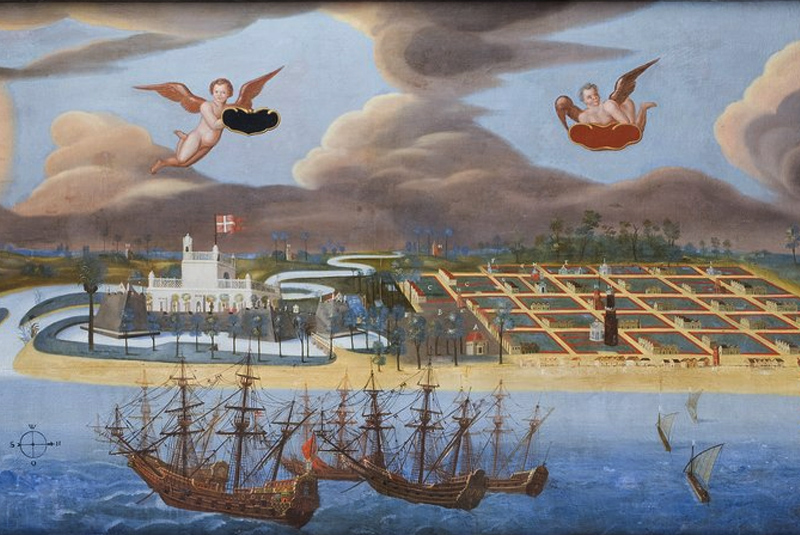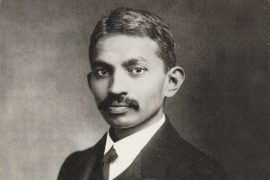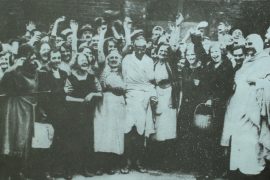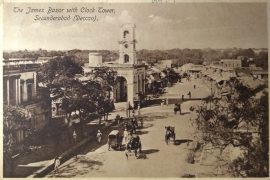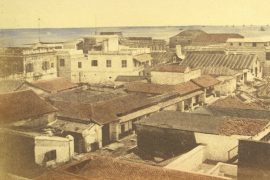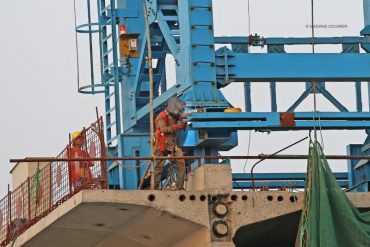On India’s Coromandel coast lies a town with a rich history. This Tamil hamlet, nestled in the Bay of Bengal, has a unique name with a rhythm: Tharangambadi, meaning the land of singing waves. The violent waves of the Bay of Bengal lose their ferocity here, and the sea hisses into the soft beaches of the town.
Tharangambadi, located in Tamil Nadu’s Nagapattinam district, is just 114 kilometres from Pondicherry, the French Riviera of the East. However, few remember how the Danes arrived and settled in this small town in the early seventeenth century.
From the mid-ninth until the early thirteenth century, Tharangambadi was part of the Chola Dynasty. And from the fourteenth century, the town was part of a regional and international commerce network, drawing Arab and, subsequently, Portuguese merchants.
The Danish East India Company – established in 1616 by King Christian IV to trade with India and Ceylon – had its sights set on the Coromandel Coast for its pepper and cardamom. When the Danish ships set sail, they landed on the shores of a lush green island, Sri Lanka. However, the Lankans refused Admiral Ove Gjedde permission to trade. After having been at sea for two years, Gjedde set sail again. And in 1620, Danish ships arrived in Tharangambadi.
Raghunatha Nayak, the ruler of the neighbouring Thanjavur kingdom, agreed on a trade deal with the Danes. Consequently, the Danes acquired ownership of the town in exchange for a yearly fee of 3,111 rupees and permitted them to export pepper to Denmark.
The name Tharangambadi was a tongue twister for the Danes. So they modified the name to ease the twist in their tongues: Tranquebar.
Tranquebar was a site of constant cultural discourse between Indian and European traditions, ideas, religions, art, architecture, and administrative standards for over two centuries. The architecture and the town structure can attest to the story.
“The long period under Danish rule transformed Tharangambadi from an Indian village into a hybrid Danish town encircled by a wall, grid pattern street layout and a strong fortress on the coast,” reads a report published by the Danish Indian Cultural Centre of Tranquebar.
Soon after their arrival, the Danes secured the town by building Fort Dansborg with the assistance of Raghunatha Nayak and his soldiers. Fort Dansborg used to be the world’s second-biggest Danish castle, right after Kronborg (commonly known as Elsinore).
The primary entrance of the town is via the Landporten (Town Gate), which is painted white and still fashions the Danish royal seal. It is a part of the ancient defensive wall surrounding Danish Tranquebar.
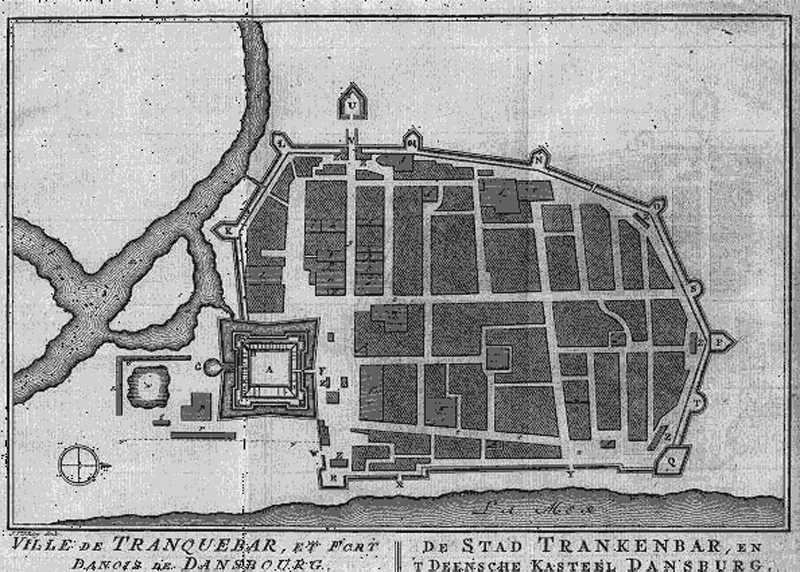
The Danish Tranquebar Association was founded in 2002 by four friends to renovate the fort; now, it has 200 members. Some sections of the fort were roped off for repair work.
In March 2016, the fort’s museum displayed fascinating artefacts from the days of Danish control, such as a well-kept copy of the sale agreement between the Danes and the British, ancient maps of the town, and a collection of miniature Danish ships that originally landed at Tranquebar.
Unlike many colonial towns, Denmark’s strong connection to its original trade outpost and vice-versa is still evident. The Danish Tranquebar Association has renovated the Danish Churchyard, one of the town’s oldest cemeteries where many Danes were buried. They worked on the Danish Governor’s Bungalow and restored the 18th-century Danish Commander’s residence, which houses a museum, library, and a Danish-Indian cultural centre.
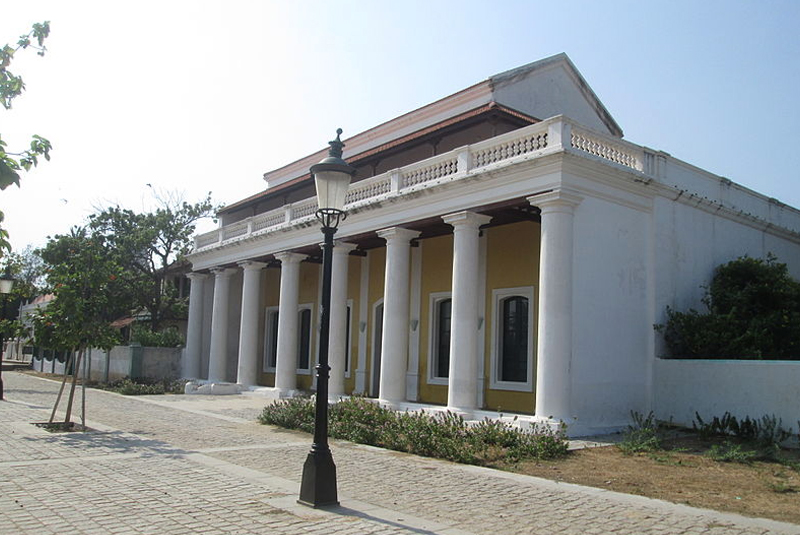
“After that first round of the Dansborg fort restoration, we hoisted the Indian flag and the Danish flag on the top,” said Poul Petersen, the association’s vice president and one of its founding members.
Danes brought Protestantism with them, and the religion became a part of the town. They also brought India’s first printing press, which printed the Bible in Tamil. Within a century, they had produced over 300 books in Tamil, significantly outnumbering other important Indian languages such as Persian and Bengali.
The traces of Danish history may be seen in colonial-era road signs. The British renamed Kongensgade to King Street, which still exists in the modern town. Colonial structures press side by side against tiny Indian dwellings.
Additionally, Tharangambadi’s education system has been handed over from the Danes. Most schools are run by the Catholic St Theresa’s Convent and the Tamil Evangelical Lutheran Church.
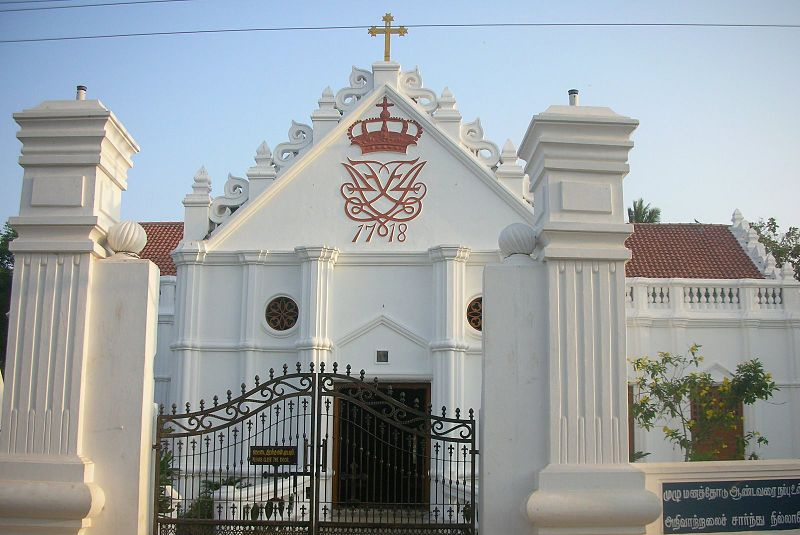
Petersen, now a retired headmaster, comes twice a year and brings students from his school to ensure that the narrative of this common Danish-Indian past is preserved. He claims that he has been intrigued with Tranquebar since he studied it in high school in Denmark. The Danish government shares similar feelings towards their shared history.
“The Danish government believes that their history is incomplete without a reference to this significant period. So they have preserved these historical records carefully in Copenhagen’s museums and archives. And Danes still like to visit Tranquebar to identify the graves of their ancestors in the local cemetery,” said SB Prabhakar Rao, the honorary Vice Consul of Denmark in Chennai.
The Danish Tranquebar Association gained residents’ confidence by assisting in the aftermath of the 2004 tsunami. They supplied new boats for fishermen and constructed a granite protection wall along the shore.
“Tharangambadi people welcome [the Danish people] because we can’t forget their help after the tsunami. Even before the government stepped in, they had helped us repair our homes and buy new boats,” said a resident.
The resurgence of Denmark’s interest implies more tourists in the town, which means more economic possibilities for the people. Local men and women are setting up tourist homestay options as the town lacks budget hotels.
Tranquebar’s mutually beneficial and long-standing connection with Denmark exists outside the spotlight focused on the tourist destination, Pondicherry. Tharangambadi, on the other hand, quietly welcomes visitors and has several interesting places.
The town is home to India’s only ozone-rich beach. While locals may not grasp what it implies, people claim that the beach and fort help to boost the local economy by luring tourists. The air is wonderfully fresh, and the inhabitants, who are tourist-friendly, are accustomed to tourists dropping by from time to time.
-30-
Copyright©Madras Courier, All Rights Reserved. You may share using our article tools. Please don't cut articles from madrascourier.com and redistribute by email, post to the web, mobile phone or social media.Please send in your feed back and comments to [email protected]

